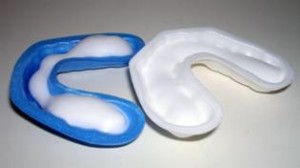What Is It?
Fluoride is a naturally occurring element that strengthens teeth. This can help to prevent tooth decay. Experts say the best way to prevent tooth decay is to use several sources of fluoride.Fluoride is found naturally in water sources in small amounts. Some foods, such as meat, fish, eggs and tea, contain fluoride. It also is added to water in some areas. Many toothpastes, rinses and professional treatments contain fluoride. Prescription fluoride tablets are available for children who do not get fluoride in their water.
What the Preparations?
Before you have an in-office fluoride treatment, your teeth should be clean. We may need to polish away stains. If you use fluoride rinses or gels at home, first brush your teeth thoroughly and floss them. It’s a good idea to use fluoride products at night before bedtime. When you are sleeping, they are less likely to be washed or rinsed away.
How It’s Done?
The fluoride treatments you receive in a dental office have more fluoride than over-the-counter fluoride mouthwash or toothpaste. They are used for both children and adults. Dental-office treatments also are different chemically and stay on the teeth longer.
There are two common types of professionally applied fluorides. Acidulated phosphate fluoride (APF) is acidic; neutral sodium fluoride is not. Neutral sodium fluoride usually is used for people who have dry mouth (xerostomia) or who have tooth-colored fillings, crowns or bridges. An acidic fluoride may irritate a mouth that is dry. It also can create small pits in tooth-colored plastic composite fillings.
Fluoride is applied as a gel, foam or varnish during a dental appointment. The teeth are dried so the fluoride doesn’t become diluted. Fluoride gel or foam can be applied by using a tray that looks like a mouth guard for one to four minutes. Fluoride varnish can be painted directly on parts of the teeth that are most likely to get a cavity, to strengthen them. This is an advantage of varnish over gel or foam. Varnish also contains a very strong concentration of fluoride. Topical fluoride comes in a variety of flavors, but it should never be swallowed.
Fluoride supplements are usually used in children. They are taken in small quantities. The daily dose ranges from 0.25 to 1 milligram. The amount is based on the child’s age and the amount of fluoride in the water he or she drinks.
We do not prescribe more than 264 milligrams of fluoride tablets at a time. That’s because the toxic dose of fluoride for a 2-year-old child weighing 22 pounds is 320 milligrams. To avoid any chance of accidental overdose, do not stock up on fluoride tablets in your home. If you have any questions regarding fluoride risks, talk to your dentist or physician.

Everyone should use fluoridated toothpaste. Be careful with young children. They are more likely to swallow the toothpaste than to spit it out. Use only a pea-sized amount of toothpaste. Encourage them to spit out as much as possible. Avoid flavored toothpastes that may encourage swallowing.
Follow-Up:
Don’t eat, drink or smoke for at least 30 minutes after a professional fluoride treatment. This helps to increase the fluoride’s contact with the teeth.
Risks:
Fluoride is safe and effective when used properly. However, it can be hazardous at high doses. All water-fluoridation systems are checked daily to maintain safe fluoride levels. Parents should supervise the use of all fluoride products, including toothpaste, in the home. Keep fluoride tablets stored safely away from young children.
If they swallow too much fluoride, young children may become nauseous. Also, too much fluoride can cause spots to form on the enamel of any developing teeth. The spots will be visible when these teeth come into the mouth. Discuss these concerns with your dental professional. He or she can recommend which fluoride products are best for your child.
Toxic fluoride doses are based on weight. For instance, a toxic dose of fluoride for an 8-year-old child weighing 45 pounds is 655 milligrams. In comparison, an 8-ounce glass of water with 1 part per million of fluoride contains 0.25 milligrams of fluoride. A small dab of toothpaste contains 0.24 milligrams of fluoride. Since these fluoride products are used in such small amounts, it is very difficult to receive toxic doses in a home setting.
When to call us?
It is important that you talk us about any fluoride products you are using. We can consider all sources of supplemental fluoride and determine which are best for you or your child.
Types of dental implants Endosteal Placed in the jaw bone endosteals are the most commonly used type for two-stage implant procedures
